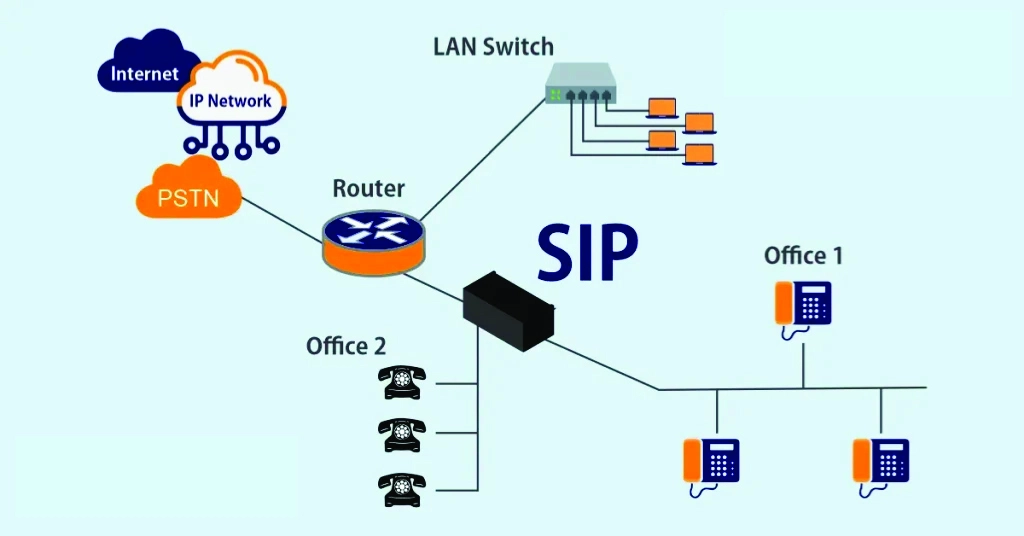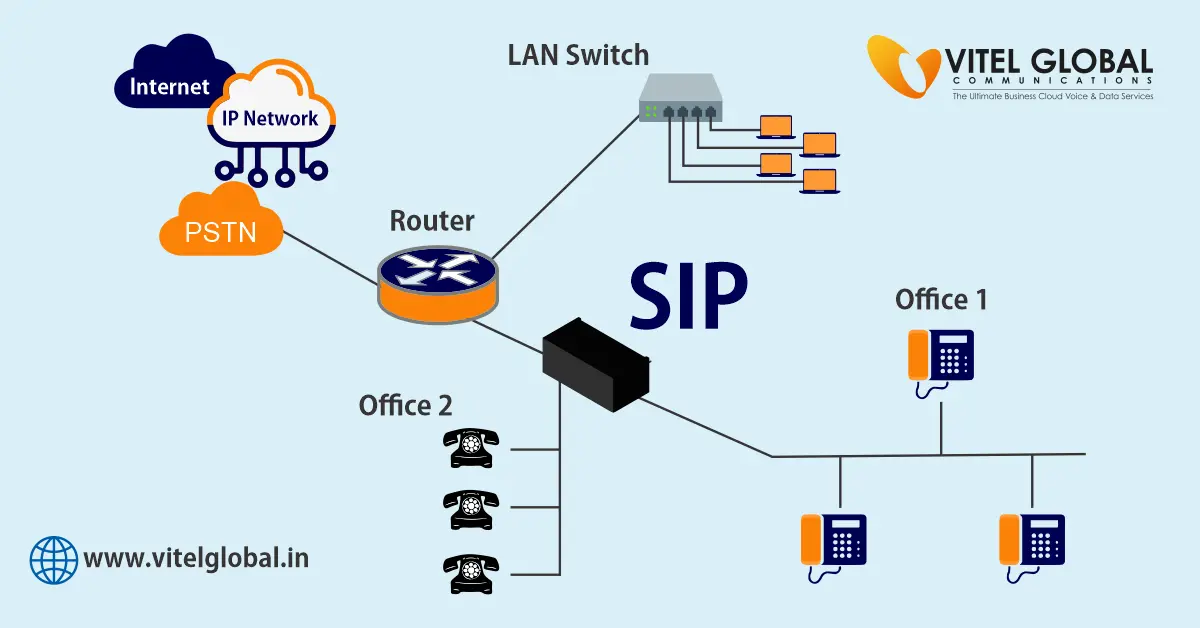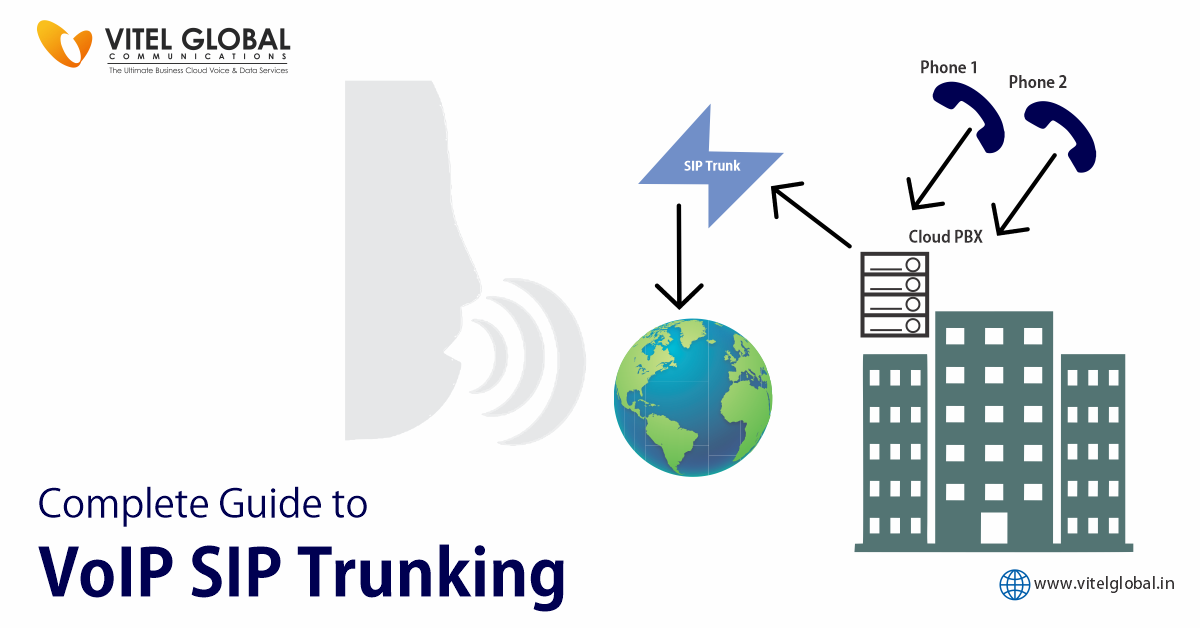Table of Contents
SIP trunking for small businesses, short for Session Initiation Protocol trunking. In the current dynamic business nature, small enterprises are continuously searching for economical and effective means of communication. Internet telephony has been a game-changer for small organizations, enabling them to cut expenses and simplify their communication infrastructure. But to fully profit from SIP trunking, proper practices must be adhered to. Let’s review digital phone service deployment, maintenance, and benefits in this blog post on best practices for small organizations.
SIP Trunking: An Overview of Technology and Operations
An SIP trunk serves as a direct line of communication between your business or organization and your Internet telephony service provider (ITSP). It makes voice-over IP (VoIP) extension easier without requiring IP-PTSN gateway installation.
Rather than utilizing actual phone lines, you can link phone calls remotely using the Session Initiation Protocol (SIP). Public Switched Telephone Network (PSTN) connections are made via SIP trunks, which are installed as part of internet connections. This makes it possible to send and receive phone calls digitally.
An internet-based phone connection is made possible by combining SIP and Voice over Internet Protocol (VoIP). Traditional phone systems, on the other hand, rely on physical phone lines.
How to Obtain SIP Trunking for Small Businesses?
To obtain services for Voice over IP, companies should begin by evaluating their specific communication needs. It includes assessing the number of users, expected call volumes, and required features. Research and select a reputable digital phone provider that meets the company’s requirements. Ensure that the company’s network is ready for internet calling services, including necessary upgrades for internet connections and security measures.
Implement E911 services for emergency response, train employees to utilize the system effectively, and regularly monitor usage for optimization. Consider scalability options for future growth, comply with regulations, and develop a disaster recovery plan. Additionally, review costs regularly to ensure efficiency and stay informed about the latest trends in IP trunking to make informed decisions. To get voice and data Convergence services for your company involves several key steps and considerations.
- Before you begin, assess your company’s specific communication requirements.
- Research and select a reputable Internet-Based Communication.
- Ensure that your company’s network infrastructure is ready for IP trunking.
- Implement robust security measures to protect your services from potential cyber threats.
- Train your staff on how to effectively use these services.
- Continuously monitor and analyse your company’s internet telephony usage.
- Stay informed about relevant local, state, and federal regulations related to these systems.
Small Business Success with SIP Trunking
These best practices can help small businesses optimize their communication systems and stay competitive in a dynamic business environment. Let’s look at the Best Practices of SIP trunking for Small Businesses.
Evaluate Your Business Needs
The first step in implementing this is to evaluate your specific communication needs. Understand the number of users, the volume of calls, and the features required. This analysis is crucial for choosing the right plan, ensuring you pay only for the services you need.
Choose a Reliable SIP Provider
Selecting a reputable SIP provider is paramount. Take the time to research and compare different providers based on factors such as reliability, customer support, pricing, and the features they offer. Look for providers with a track record of serving small businesses effectively.
Assess Network Readiness
It relies on a robust internet connection. Make sure your network is ready to handle the expected call volume and data traffic. Consider having a dedicated broadband connection with sufficient bandwidth to guarantee high call quality.
Implement Redundancy
To prevent communication downtime, it’s essential to implement redundancy in your IP trunking system. This involves having a backup internet connection and redundant SIP trunks. Redundancy ensures that even if one connection fails, your communication remains uninterrupted.
Prioritize Security
Security is a significant concern when it comes to unified communications over IP. Cyber threats cannot harm small enterprises. Implement security measures such as firewalls, and encryption, and regularly update your SIP equipment to safeguard your communication channels.
Optimize Bandwidth
High-quality voice calls depend on optimized bandwidth. Employ Quality of Service (QoS) settings to allocate more bandwidth to voice calls over other data traffic. This will help maintain voice quality even during periods of high network usage.
Configure E911 Services
Ensure that your system is configured with Enhanced 911 (E911) services. This is critical for public safety, as it enables emergency services to accurately locate and respond to your business’s address in case of an emergency.
Train Your Staff
Effective utilization of this requires adequate training for your staff. Ensure that your employees are familiar with the system and its features, which will maximize productivity and customer service quality.
Monitor and Analyze Usage
Regularly monitor and analyze your IP trunking usage. By doing so, you can identify call patterns, peak hours, and areas for improvement. This data is valuable for optimizing your system and potentially reducing costs.
Embrace Scalability
Small businesses grow, and your communication needs will evolve. For that SIP trunking solution provides a flexible and scalable communication platform for enterprises. Select a SIP provider that offers scalable solutions, allowing you to easily adjust your services as your business expands.
Compliance and Regulations
Stay informed about local, state, and federal regulations related to internet telephony. Compliance is essential to avoid legal issues and ensure your business operates within the law.
Keep Up with Technology Trends
This technology is continuously evolving. It’s essential to stay up-to-date with the latest trends and innovations. This knowledge will help you make informed decisions about upgrading your communication systems.
Regularly Review Costs
While it can significantly reduce communication costs, it’s important to review your expenses periodically. Ensure you are not overpaying for unused services or features.
Conclusion
SIP trunking is a valuable cloud phone solution for small businesses, offering cost savings and mobility. By following these best practices, you can make the most of this technology while ensuring the highest quality of service. Evaluate your needs, choose a reliable provider, maintain network readiness, prioritize security, and regularly monitor and adapt your system to changing requirements. It can be a game-changer for your small business, helping you stay competitive in today’s fast-paced business landscape.




